Early exploration revealed more than new countries. Wildlife from the "other end of the world" included animal shapes that were quite different from any seen in Europe, and a unique and strange beauty of botany - particularly in Australia. Natural history artists from Europe, travelling with early expeditions, carefully recorded specimens that were quite unlike any they had seen. Scientists who accompanied these voyages of exploration were commissioned with collecting seeds and specimens.
The first major records of Australian nature were made when the east coast of Australia was finally discovered and charted by James Cook in the Endeavour in 1770. Cook was accompanied by Sir Joseph Banks, and while some of the animals and birds from Cook's Voyage were published by Hawkesworth in 1773, the botanical discoveries remained largely unknown. Most of the amazing collection from this voyage was not published until many years later. Banks, who was mainly interested in botany, retained the majority of the botanical specimens in his own library. Banks bequeathed them to botanist Robert Brown, who subsequently presented them to the British Museum (now the Natural History Museum). Between 1980 and 1990 the engraved plates for "Bank's Florilegium" were finally restored by the British Museum for their initial publication. Many botanical specimens from Australia were illustrated and published first in France, as Napoleon Bonaparte encouraged scientific exploration and subsequent publication of their discoveries.
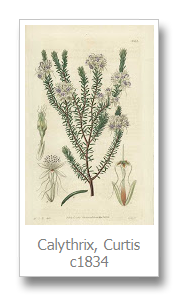
Following settlement of Australia in 1778, botanical specimens that were discovered were sent to Kew Gardens in England. From 1787, “in response... to solicitations for a work... (combining) Botany and Gardening”, William Curtis (Praefectus Hortis of Chelsea Physic Garden at Kew) began publishing "The Botanical Magazine; or Flower-Garden Displayed" with hand-coloured copperplate engravings illustrating botanical specimens from around the world. Illustrations of botany (many with fine dissections of flowers) were accompanied by text describing the place where each specimen was found, and advice on cultivation in England. Some flora is found only in Australia - or New Holland at it was named by the Dutch.
"Curtis's Botanical Magazine" proved so successful that it has been published almost continuously, for over 222 years. It is now known as “The Kew Magazine”. The earliest copperplate engravings were published on hand-made paper and were hand-coloured with natural ochres (which last almost indefinitely - unlike modern printing inks). Part of their fascination is the finely engraved details of botanical dissections that were illustrated with each flower study. Printing processes changed over the years. Copperplates were replaced by more durable steel plates; and then images were then sketched onto a lithographic stone. When hand-colouring proved too slow and expensive, colour-printing followed.
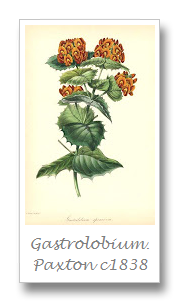
During the hundreds of years since the first explorers arrived, many botanical artists have been fascinated by the beautiful forms and hardy nature of Australia's distinctive native plants. The artists have sometimes published their own work, but more often they were commissioned by a botanist or horticulturist, for a specific publication. Among the most colourful antique botanical illustrations are the hand-coloured aquatint engravings and lithographs for "Paxton's Magazine of Botany, and Register of Flowering Plants". Some of the finest hand-coloured engravings were by Benjamin Maund for "The Botanic Garden" and "The Botanist".
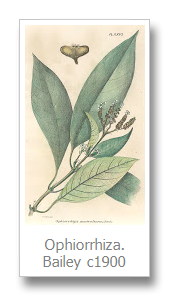 Nicely framed botanical studies are perennial favourites as artwork for the walls. Their is an enormous range of Australian flora and artistic styles have varied considerably over hundreds of years, providing us with a great choice. Original antique prints of Australian flora are available from http://www.antiqueprintclub.com/c-20-botanicalsfruit.aspx
Nicely framed botanical studies are perennial favourites as artwork for the walls. Their is an enormous range of Australian flora and artistic styles have varied considerably over hundreds of years, providing us with a great choice. Original antique prints of Australian flora are available from http://www.antiqueprintclub.com/c-20-botanicalsfruit.aspx
Frederick Manson Bailey's Queensland Flora was illustrated by simple, finely-detailed images circa 1899-1902. Most of these lithographs are by Frederick Elliott (who is better known for his maritime watercolours.) Printed on fine paper, these botanical illustrations are rarely seen today. We have some that have been hand-tinted by watercolour since publication. We also have for sale (not yet on our website) the set of seven books of Queensland Flora (including the usually absent General Index.

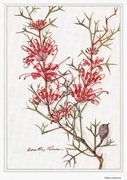
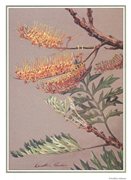
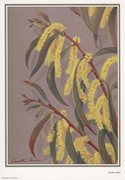
Above, are a few of the prints from the Australian wildflower paintings by Dorothy Gordon (1930-1985) provide a more artistic representation of Australian native flora. They were painted under the watchful eye of her husband, David Gordon (1899-2001), ‘the grand old man of Australia flora’, who was awarded the Order of Australia for services to horticulture and conservation. Dorothy Gordon watercolours are on view in the gallery at Myall Park Botanic Garden, established by David Gordon at Glenmorgan near Dalby on the Darling Downs west of Brisbane here in Australia. The prints from a selection of Dorothy Gordon flower paintings were reproduced by, and are available from, Myall Park Botanic Garden or the Heritage Editions section of our website at Australian native flower prints